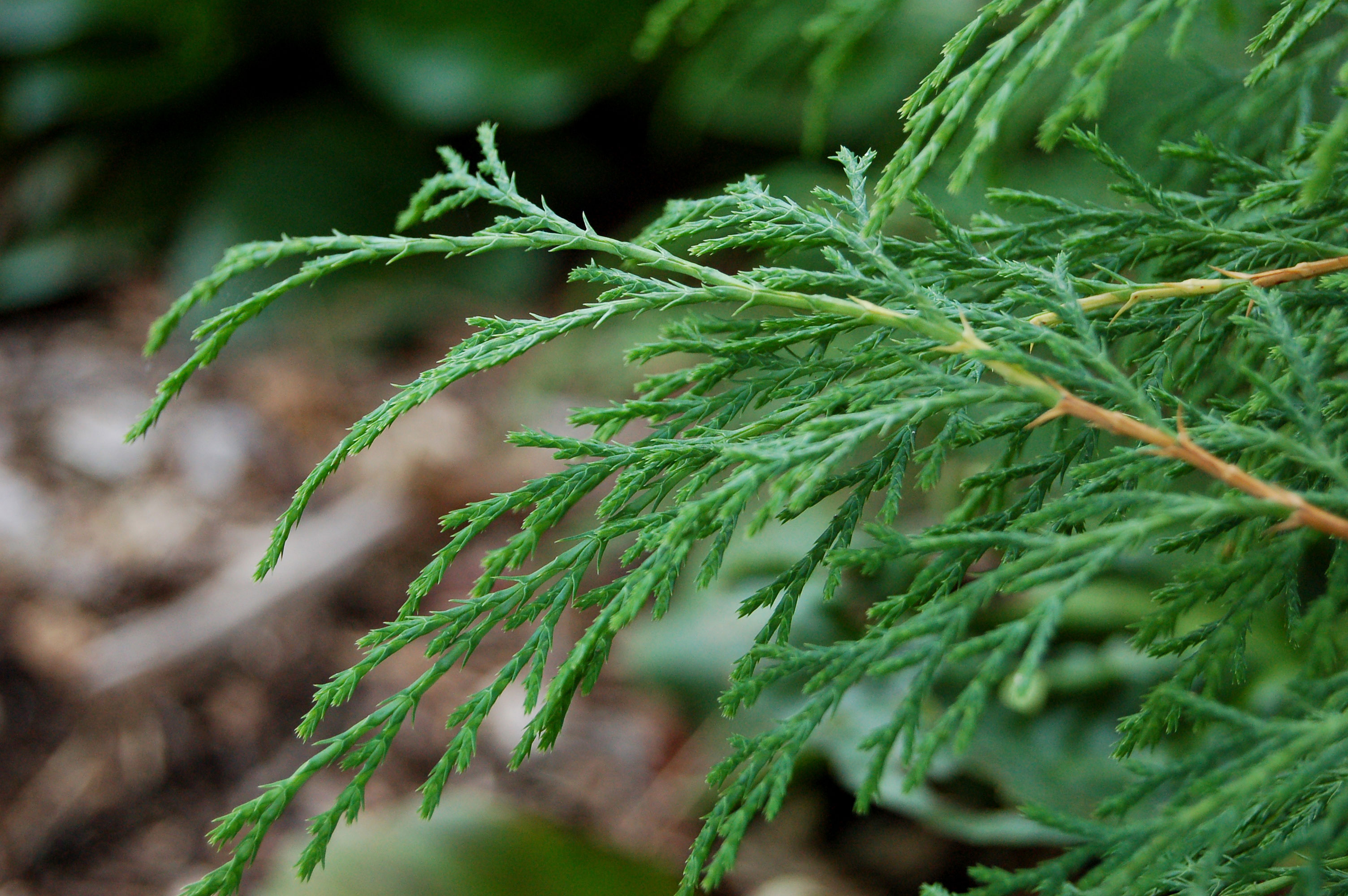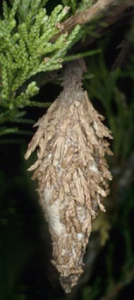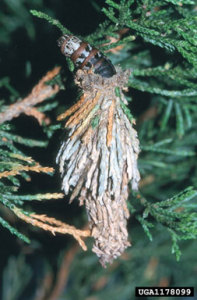A couple of summers ago, our family took a trip to the Antietam Civil War Battlefield. I love history as much as I do plants. You can imagine my joy as we walked out of the hotel parking lot and I saw an insect I had not seen since childhood. I got my kids out of the car so they could see this rare sight. The only thing they wanted to do less than having their dad drag them around a battlefield was to look at some insect pest. But they actually thought this was kinda cool.
Hanging in a large arborvitae hedge was a bunch of small, brownish “bags”. They were created by sticking a bunch of arborvitae leaves together to form a cocoon. The interesting thing was the bags would move, swinging or jolting periodically like a Mexican jumping bean. Even my jaded kids thought that was interesting.
If it was just a harmless collection of pine cone looking bags it would be no more than a curiosity. However, inside the shaking cocoon was the dreaded arborvitae bag worm. And the damage to the arborvitae hedge was severe.
The bag worm will cause major browning and thinning in the arborvitae hedge. Major damage can happen suddenly in a single season. If left unchecked, bag worm can kill a large arborvitae.
As mentioned, I had not seen this pest in Connecticut since I was a child. However, last year I saw several outbreaks of this destructive insect in Fairfield County. I am spreading the word that people with arborvitae in their landscaping should be on the lookout for this pest. Hiding in that bag is a monster ready to destroy your valuable arborvitae.
Featured image (above): Russian Arborvitae Microbiota decussata Stalks by Derek Ramsey is licensed under CC SA 2.5
RESOURCES:
‘Arborvitae (Thuja) Plant Health Problems’ – The Connecticut Agricultural Experiment Station
‘Bagworm’ – US Department of Agriculture (PDF)
‘Evergreen bagworm’ – Wikipedia




Recent Comments